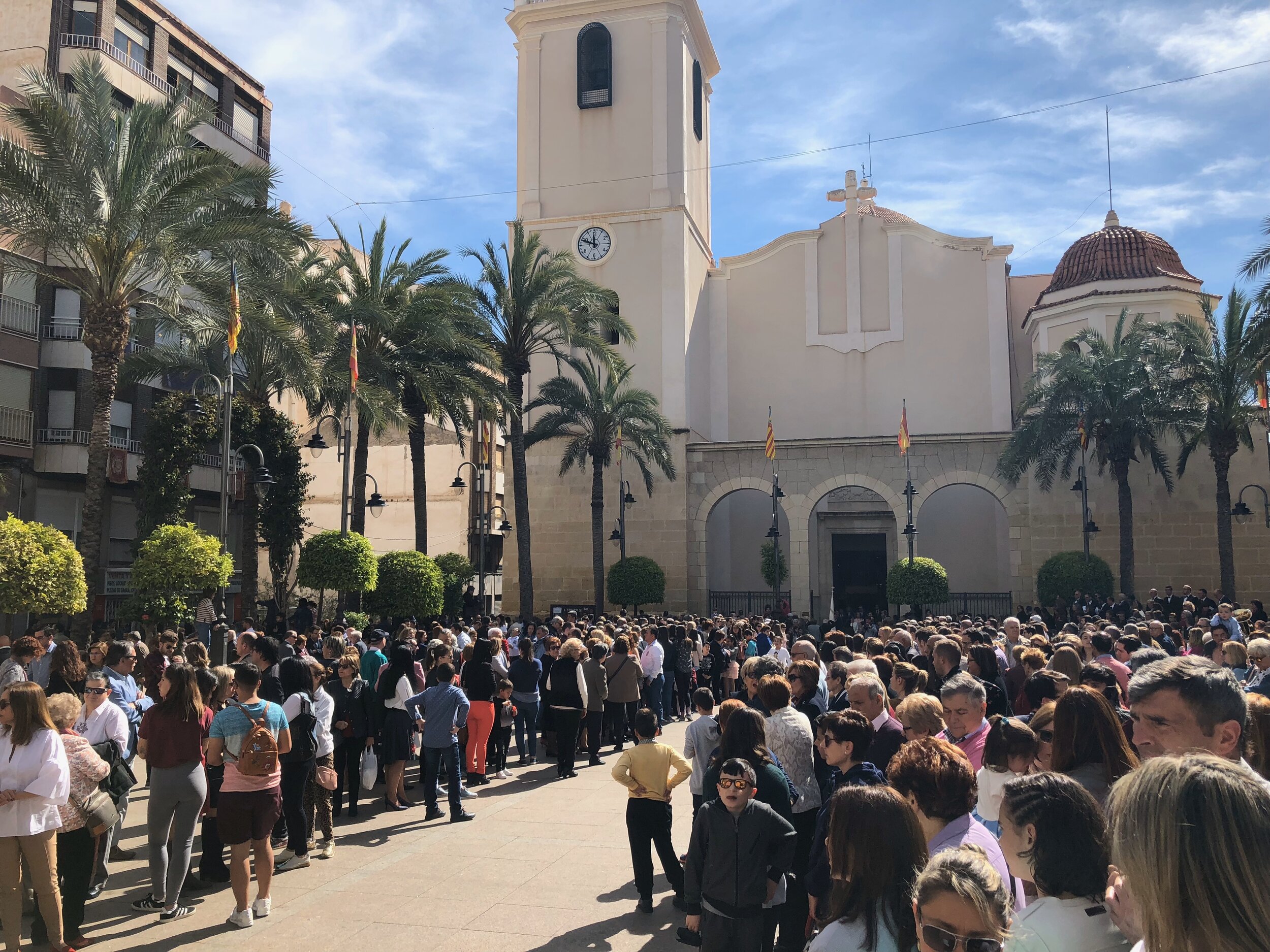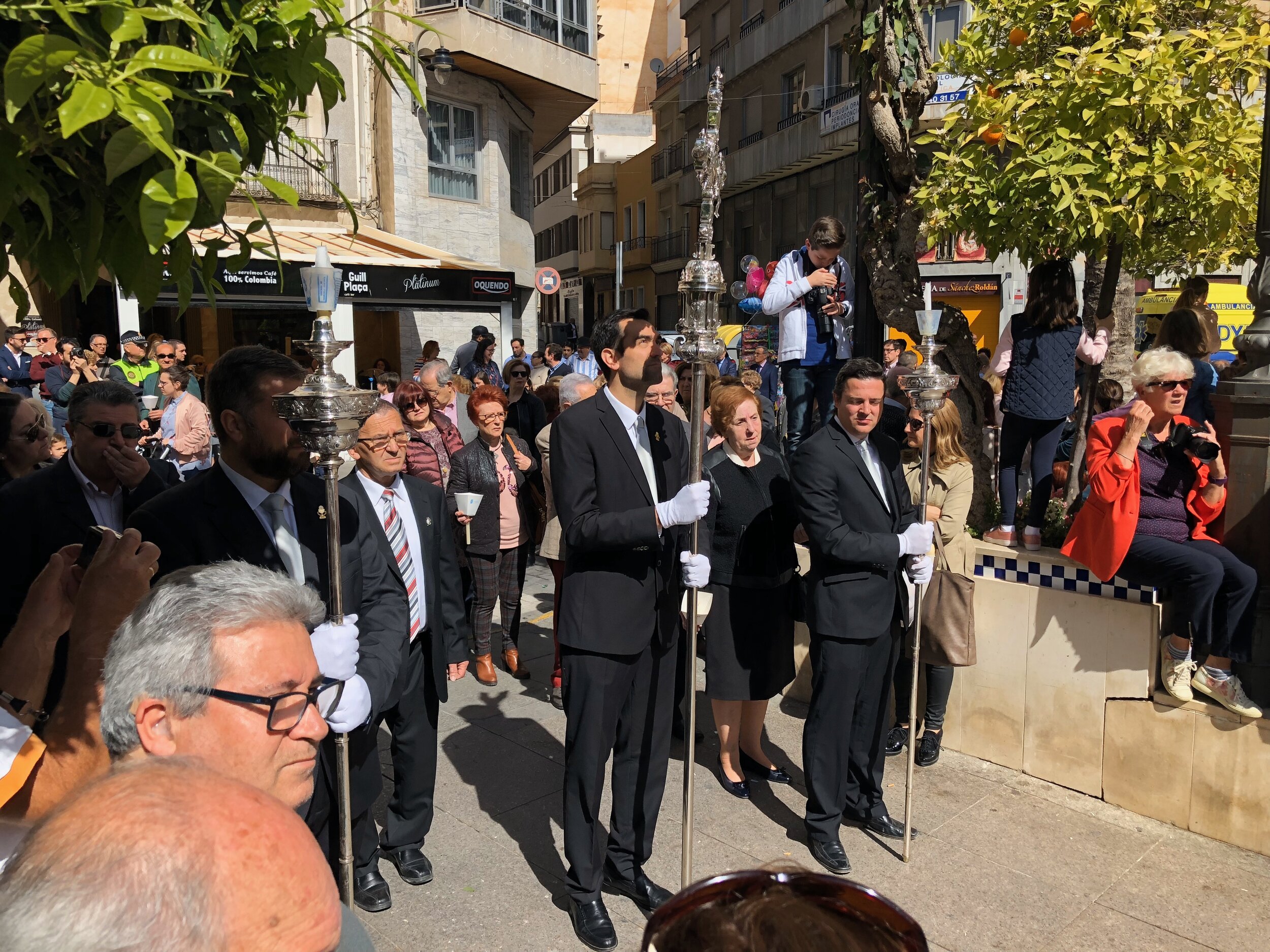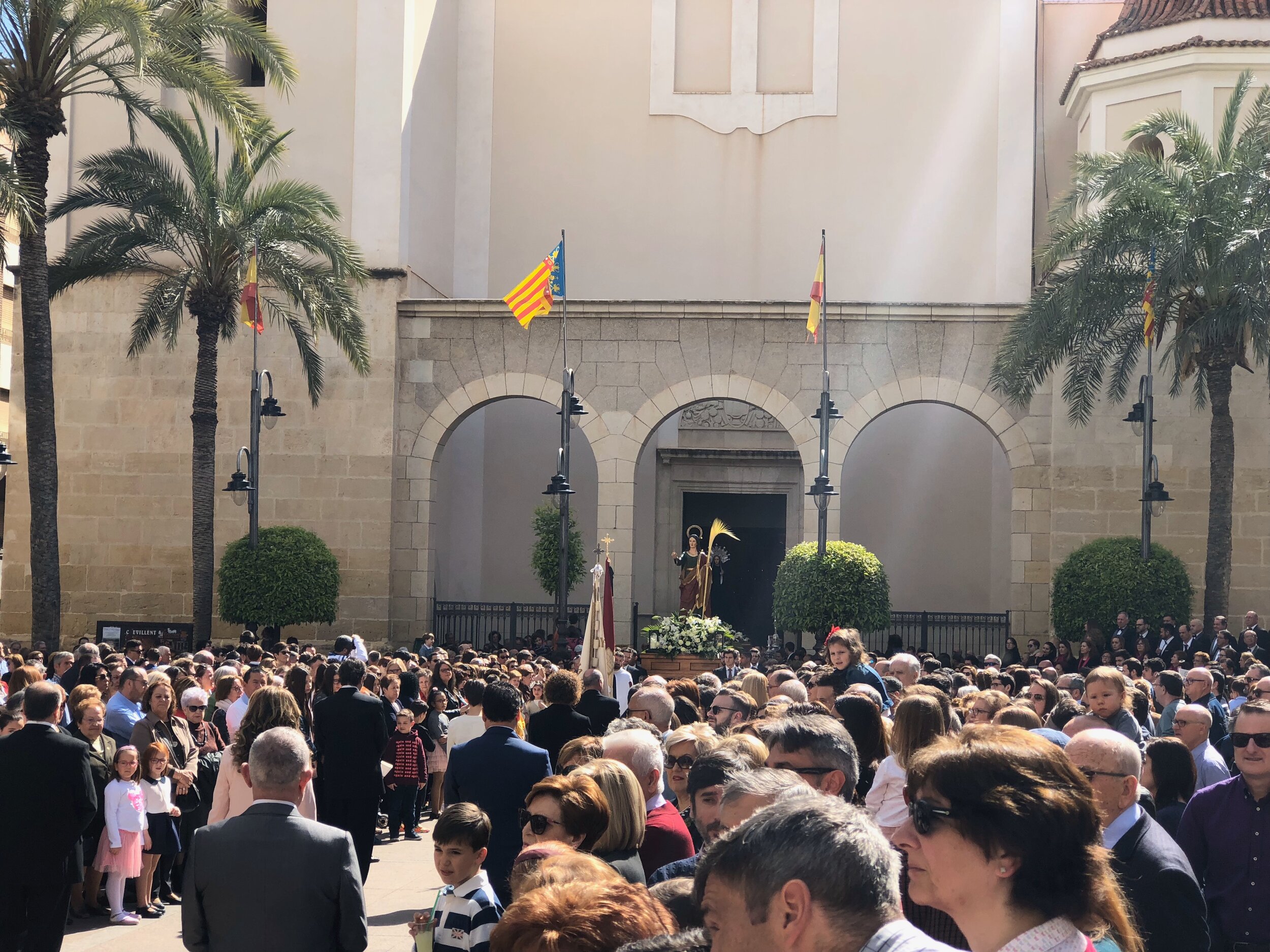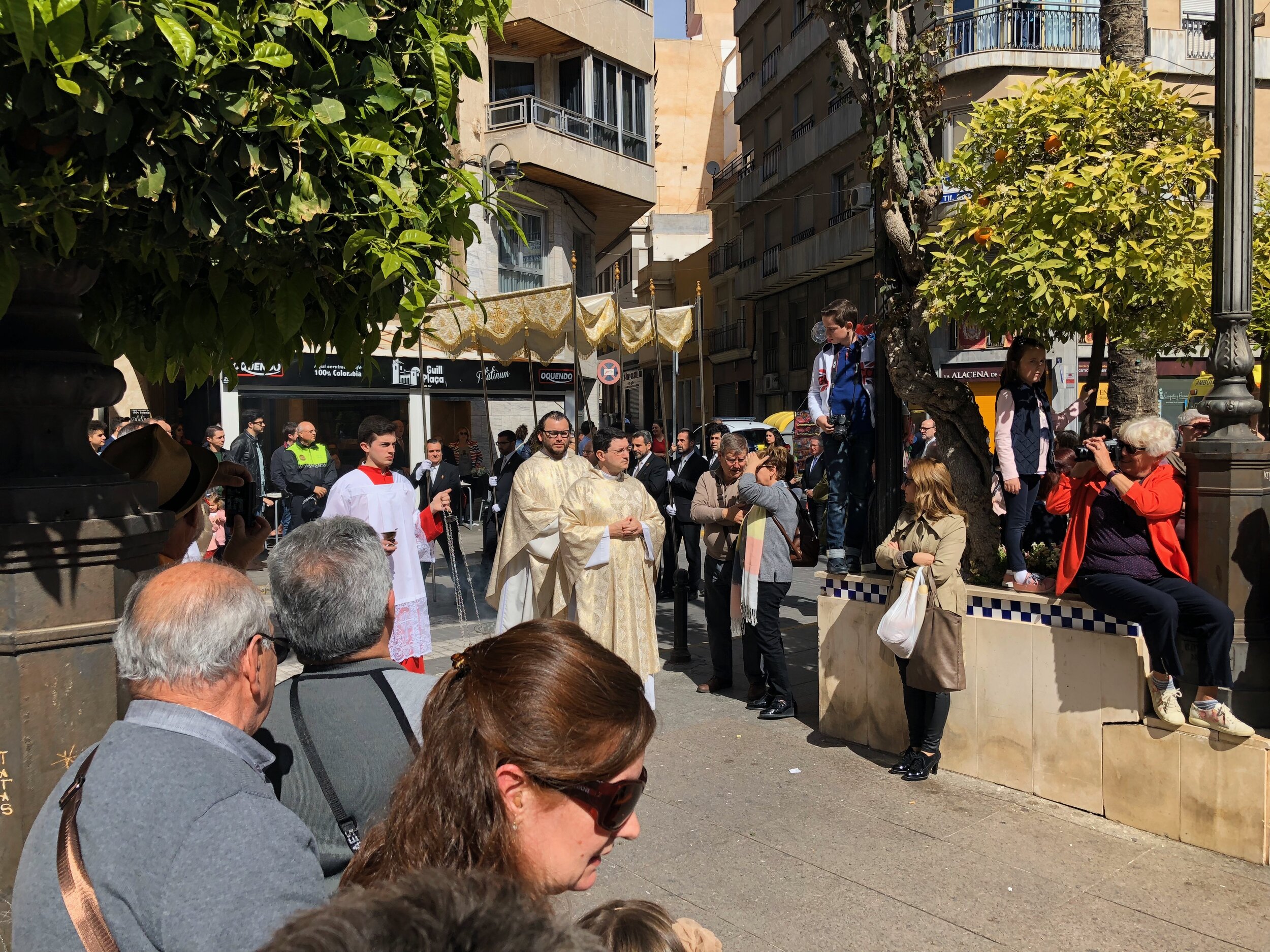Easter and the Spanish Festivals
We lived in Spain for five months in our Motorhome in the days before Schengen restrictions and the first Covid lock down and grew to love this Country, its people and its customs. Rich in history, including Roman and Moorish influence and strong Catholic tradition builds for a heady mix of culture . A nation built from different Christian Kingdoms reaching back to the 15th century, the most important from the days of ‘old Hispania’ are the Kingdom of Castile (occupying northern and central portions of the Iberian Peninsula) and the Kingdom of Aragon (occupying northeastern portions of the peninsula). The rulers of the kingdoms of Castile and Aragon were allied with dynastic families in Portugal, France, and other neighbouring kingdoms.
With the rich historical mix of this nation there is no wonder it has such proud traditions , flamboyant in nature and passionate in execution. It has colour , it has bright costumes and loud music, it has noise and it has passion , it has dancing and we love it.
In this blog we write initially about what is in our opinion the greatest street party we have experienced. Other parts of the world will claim more extravagant expression of culture through carnival and the Las Fallas doesn’t even make the Conde Nast Traveller magazines top 19 Carnivals , but for heart , authenticity and the love of its community it ranks highly. Above all else , it felt safe , more than can be said for many of the worlds carnivals.
The Spanish need no excuse to Party of course , young and old , and festivals occur all year round in every city, village and hamlet throughout the land , but the period between Christmas and Easter is particularly active. During our time in Spain we loved the spectacle of the festival. Large or small the local people planned for months and come the day really enjoyed themselves. Still a fairly religious nation, many of the festivals have their roots in the tradition of the Catholic Church . We have enjoyed a number of these festivals from the totally insane Las Fallas in València to the small Christmas and Easter Sunday parades in Elche and Catral. Based in the Valèncian Community District which has access to excellent public transport moving around to such festivals is easy and reliable.
Las Fallas (The Fire) Festival
Each Year the City of València in March hosts the festival called Las Fallas , where street parties see highly decorated mannequins , fireworks , music and parades dominating the city. The local people told us not to miss it so we caught the train to Alicante and changed for Valencia in what was a true travel experience . It simply blew us away.
Districts of the Valèncian Community organise into committees (Casals Fallers) fund raise all year to raise money to build these amazing mannequins , or the Ninots or Fallas as they are known locally. They are beautifully crafted and competition is tight for the winners of the best Ninot.
Although the festival runs between the 1 - 19th March each year, the crescendo of the festival amounts to 5 days and nights of street parties and is simply one of the greatest spectacles we have witnessed.
There are different conjectures regarding the origin of the Fallas festival. One suggests that the Fallas started in the Middle Ages, when artisans disposed of the broken artefacts and pieces of wood they saved during the winter by burning them to celebrate the spring equinox. Valencian carpenters used planks of wood called parots to hang their candles on during the winter, as these were needed to provide light to work by. With the coming of the spring, they were no longer necessary, so they were burned. Over time, and with the intervention of the Church, the date of the burning of these parots was made to coincide with the celebration of the festival of Saint Joseph, the patron saint of carpenters.
This tradition continued to evolve. The parot was dressed with clothing so that it looked like a person; features identifiable with some well-known person from the neighbourhood were often added as well. To collect these materials, children went from house to house asking for una estoreta velleta (an old rug) to add to the parot. This became a popular song that the children sang as they gathered all sorts of old flammable furniture and utensils to burn in the bonfire with the parot. These parots were the first ninots. Over the years, people of the neighbourhoods began to organise the building of the fallas, and thus the typically intricate constructions, including their various figures, were born.
Until the beginning of the 20th century, the fallas were tall boxes with three or four wax dolls dressed in fabric clothing. This changed when the creators began to use cardboard. The fabrication of the fallas continues to evolve in modern times, when the largest displays are made of polystyrene and soft cork easily moulded with hot saws. These techniques have allowed the creation of fallas over 30 metres high.
The main elements of the Festival as it reaches its climax , are the following.
La Deserta - Each morning at 8am Brass Bands form and parade around the streets followed by supporters who throw fireworks behind the band.
La Mascleta - Each afternoon at 2pm there is an amazing firework display caught in the video above. The noise is incredible with the acoustic shockwave felt in the ground and buildings.
L'Ofrena de flors the flower offering, each of the Casals Fallers takes an offering of flowers to the Virgin Mary as Our Lady of the Forsaken.This occurs all day during 17–18 March. A statue of the Virgin Mary and its large pedestal are then covered with all the flowers.
Els Castells and La Nit del Foc On the nights of the 15, 16, 17, and 18th there are firework displays in the old riverbed in València. Each night is progressively grander and the last is called La Nit del Foc (the Night of Fire)
Cavalcada del Foc On the final evening of Falles, at 7:00 pm on 19 March, a parade known in Valencian as the Cavalcada del Foc (the Fire Parade) takes place along Colon street and Porta de la Mar square. This spectacular celebration of fire, the symbol of the fiesta's spirit, is the grand finale of Fallas and a colourful, noisy event featuring exhibitions of the varied rites and displays from around the world which use fire; it incorporates floats, giant mechanisms, people in costumes, rockets, gunpowder, street performances and music.
La Crema - more below.
The traditional dress worn by "falleros" (males) has changed from black trousers and black jacket with white shirt and other motifs, to colourful and a more traditional and historic custom with many decorations. These outfits can be very expensive but not as much as the dresses by the "reinas falleras" (queens of the festival). Prices of female traditional dresses can vary from 2,000 Euros to more than 20,000 Euros. Some of them are astonishing in beauty. They are accompanied with traditional hair style and jewellery.
On the final night of Fallas, around midnight on 19 March, the Fallas or Ninots are burnt as huge bonfires. This is known as La Cremà (the Burning), the climax of the whole event and the reason why the constructions are called fallas ("torches"). Traditionally, the falla in the Plaça de l'Ajuntament is burned last.
All areas have a falla infantil (a children's falla, smaller and without satirical themes), which is held a few metres away from the main one. This is burnt first, at 10:00 pm. The main neighbourhood fallas are burnt closer to midnight; the burning of the fallas in the city centre often starts later. For example, in 2005, the fire brigade delayed the burning of the Egyptian funeral falla in Carrer del Convent de Jerusalem until 1:30 am, when they were sure all safety concerns were addressed.
Each falla is laden with fireworks which are lit first. The construction itself is lit either after or during the explosion of these fireworks. Fallas burn quite quickly, and the heat given off is felt by all around. The heat from the larger ones often drives the crowd back a couple of metres, even though they are already behind barriers that the fire brigade has set several metres from the construction. In narrower streets, the heat scorches the surrounding buildings, and the firemen douse the frontages, window blinds, street signs, etc. with their hoses to stop them catching fire or melting, from the beginning of the cremà until it cools down.
Away from the fallas, people frolic in the streets, the whole city resembling an open-air dance party, except that instead of music there is the incessant (and occasionally deafening) sound of people throwing fireworks around randomly. There are many stalls selling trinkets and snacks such as the typical fried porres, churros and bunyols, as well as roasted chestnuts.
While the smaller fallas dotted around the streets are burned at approximately the same time, the last falla to be burned is the main one, which is saved until last so that everybody can watch it. This main falla is found outside the Ajuntament – the city hall building. People arrive a few hours before the scheduled burning time to get a front row view. This final falla is burned in public after the signal from the Fallera Major to officially commence.
Elche Easter Festival
Elche is a provincial city between Alicante and Murcia a working place rather than a tourism spot , but just the place to go to if you like to find out how how the locals live. We tipped up deliberately on Easter Sunday to watch the Parade, it was impressive for the deference paid to the subject and the spectacular.
Good Friday in Catral
This parade may seen a little odd at first glimpse , the parade on Good Friday would of course be a sombre one and the people taking part would often wear a robe and a hood called a Capirote, a pointed hood which is worn by members of a Catholic Order of Penitents. It dates to the times of the Spanish Inquisition and whilst being Christians were are not members of the Catholic Church so didn’t always understand the significance of the ritual , but it seemed a mixture of tradition and a demonstration of a sombre subject of the Passion of Christ. In fairness until we researched the Spanish Inquisition our only reference was the Monty Python Sketch and the famous line “ No one expects the Spanish Inquisition. The Images are dark as this parade takes place at night and all the street lighting is turned off.
Small Village Parades
These parades took place in relatively large towns and Cities but the small villages were not to be outdone and whilst they may be not as grand they are enthusiastically enjoyed by all. I used the word authentic at the top of the blog and this word has significance to us and its why we love Spain and its people. Most aren’t rich , in fact life isn’t that easy but they stick by each other and their customs. If you know where you are from warts and all , surely it makes it easier to know where you are going. I pray for better times for Spain , ravaged by Civil War , an on going separatist discussion surrounding Catalonia and financial effects of financial crisis and now COVID. I believe its people have pride , heart and heritage and better times will arrive.


























